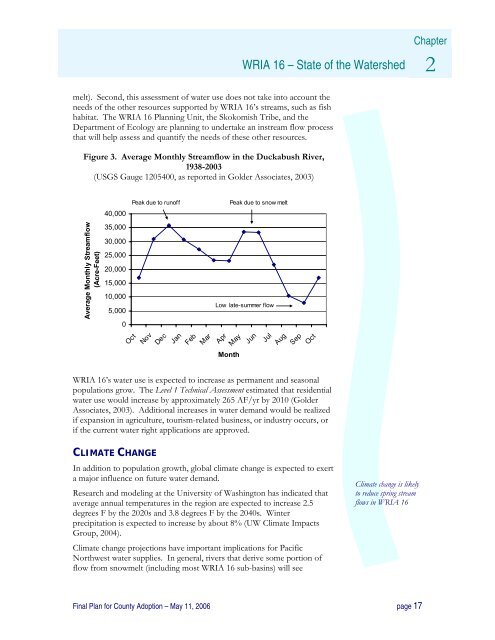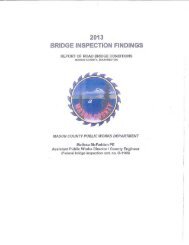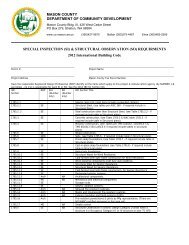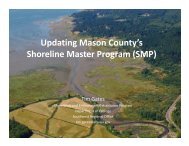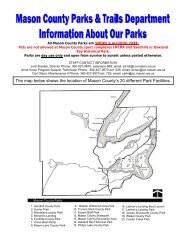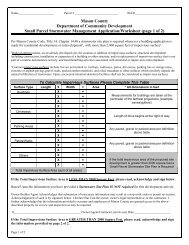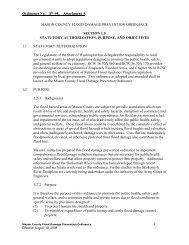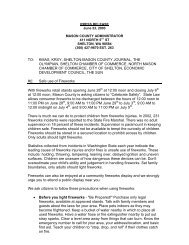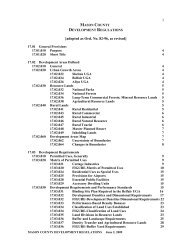Watershed Management Plan - Mason County
Watershed Management Plan - Mason County
Watershed Management Plan - Mason County
You also want an ePaper? Increase the reach of your titles
YUMPU automatically turns print PDFs into web optimized ePapers that Google loves.
Chapter<br />
WRIA 16 – State of the <strong>Watershed</strong> 2<br />
melt). Second, this assessment of water use does not take into account the<br />
needs of the other resources supported by WRIA 16’s streams, such as fish<br />
habitat. The WRIA 16 <strong>Plan</strong>ning Unit, the Skokomish Tribe, and the<br />
Department of Ecology are planning to undertake an instream flow process<br />
that will help assess and quantify the needs of these other resources.<br />
Figure 3. Average Monthly Streamflow in the Duckabush River,<br />
1938-2003<br />
(USGS Gauge 1205400, as reported in Golder Associates, 2003)<br />
Average Monthly Streamflow<br />
(Acre-Feet)<br />
40,000<br />
35,000<br />
30,000<br />
25,000<br />
20,000<br />
15,000<br />
10,000<br />
5,000<br />
0<br />
Peak due to runoff<br />
Oct<br />
Nov<br />
Dec<br />
Jan<br />
Feb<br />
Mar<br />
Apr<br />
Month<br />
Peak due to snow melt<br />
Low late-summer flow<br />
May<br />
Jun<br />
Jul<br />
Aug<br />
Sep<br />
Oct<br />
WRIA 16’s water use is expected to increase as permanent and seasonal<br />
populations grow. The Level 1 Technical Assessment estimated that residential<br />
water use would increase by approximately 265 AF/yr by 2010 (Golder<br />
Associates, 2003). Additional increases in water demand would be realized<br />
if expansion in agriculture, tourism-related business, or industry occurs, or<br />
if the current water right applications are approved.<br />
CLIMATE CHANGE<br />
In addition to population growth, global climate change is expected to exert<br />
a major influence on future water demand.<br />
Research and modeling at the University of Washington has indicated that<br />
average annual temperatures in the region are expected to increase 2.5<br />
degrees F by the 2020s and 3.8 degrees F by the 2040s. Winter<br />
precipitation is expected to increase by about 8% (UW Climate Impacts<br />
Group, 2004).<br />
Climate change projections have important implications for Pacific<br />
Northwest water supplies. In general, rivers that derive some portion of<br />
flow from snowmelt (including most WRIA 16 sub-basins) will see<br />
Climate change is likely<br />
to reduce spring stream<br />
flows in WRIA 16<br />
Final <strong>Plan</strong> for <strong>County</strong> Adoption – May 11, 2006 page 17


